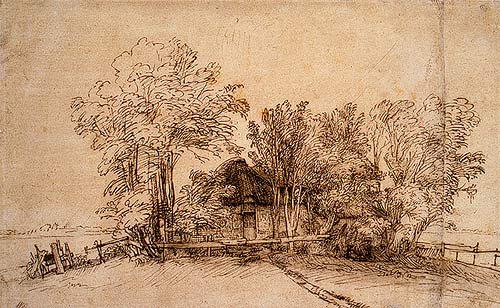Cards In This Set
| Front | Back |
|
Pigment
|
A coloring material made from various organic or chemical substances. When mixed with a binder, it creates a drawing or painting medium.
|
|
Binder
|
A substance in paints that causes particles of pigment to adhere to one another and to a support.
|
|
Graphite
|
A soft, crystalline form of carbon first discovered in the 16th century, graphite is a naturally occurring drawing medium.
|
|
Metalpoint
|
The ancestor of the graphite pencil, is an old technique that was especially popular during the Renaissance. Descendant of the stylus
of classical times and ancestor of the modern pencil, a small,
sharpened metal rod used for drawing precise compositions on paper or
parchment. The metal could be lead, silver, copper, or gold, but silverpoint
was the most common choice because it is the most suited to permanent
drawing, its stroke adhering unerasably. The silverpoint was of great
value in producing the hard, clearly defined line required, for
instance, by miniaturists; modelling, emphases, and light phenomena,
however, had to be rendered either by means of repetitions, dense
hatching, or blanks or else supplemented by other mediums.
|
|
Ground
|
A preparatory coating of paint, usually white but sometimes colored, applied to the support for a painting or drawing.
|
|
Charcoal
|
Is charred wood.
|
|
Crayon, Pastel, and Chalk
|
Crayons and pastels are made of powdered pigments, the same as those used to make paints, mixed with a binder. For crayons, the binder is a greasy or waxy substance. Pastel consists of pigment bound with a nongreasy binder such as a solution of gum arabic or gum tragacanth (natural gums made from hardened sap) in water. Chalk is 3 soft, finely textured stones that can be used for drawing: black chalk (a composite of carbon and clay), red chalk (iron oxide and clay), and white chalk (calcite or calcium carbonate).
|
|
Pen
and Ink |
Drawing inks generally consist of ultrafine particles of pigment suspended in water.
|
|
Wash
|
 Ink diluted with water and applied with a brush, to give greater solidity to the cottage and to soften the shadows beneath the trees |
|
Brush
and Ink |
The soft and supple brushes used for watercolor can also be used with ink. Brushes can be wielded boldly and brutally or with great delicacy and refinement, producing a broad range of effects.
|
|
Conceptual Art
|
Art created according to the belief that the essence of art resides in a motivating idea, and that any physical realization or recording of this idea is secondary. Conceptual art arose during the 1960s as artists tried to move away from producing objects that could be bought and sold. Conceptual works are often realized physically in materials that have little or no inherent value, such as a series of photographs or texts that document an activity. They are often ephemeral.
|



